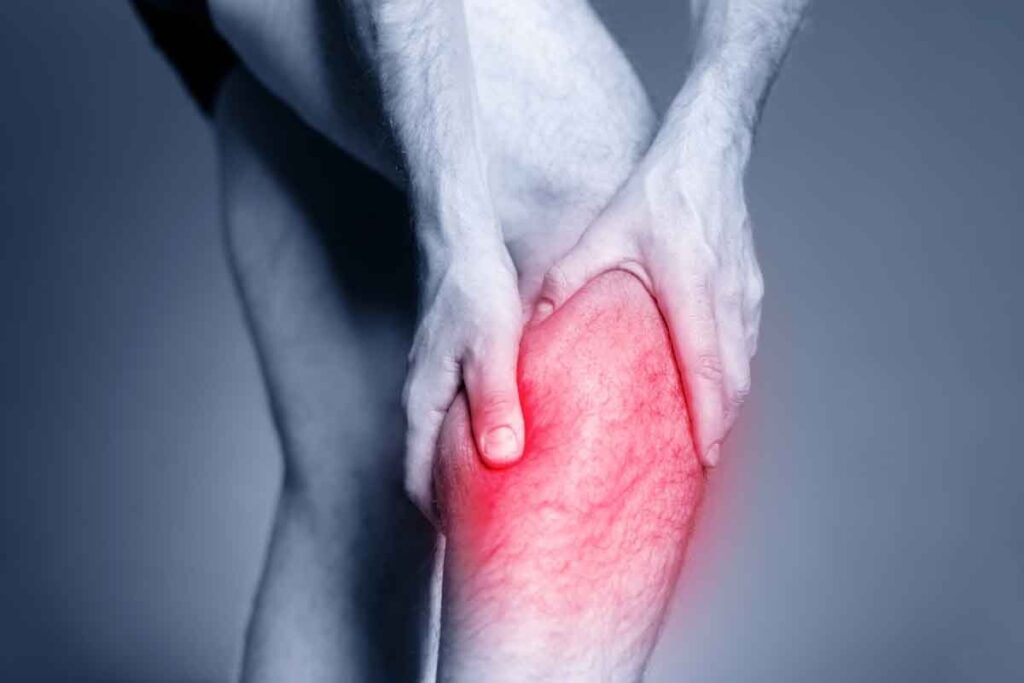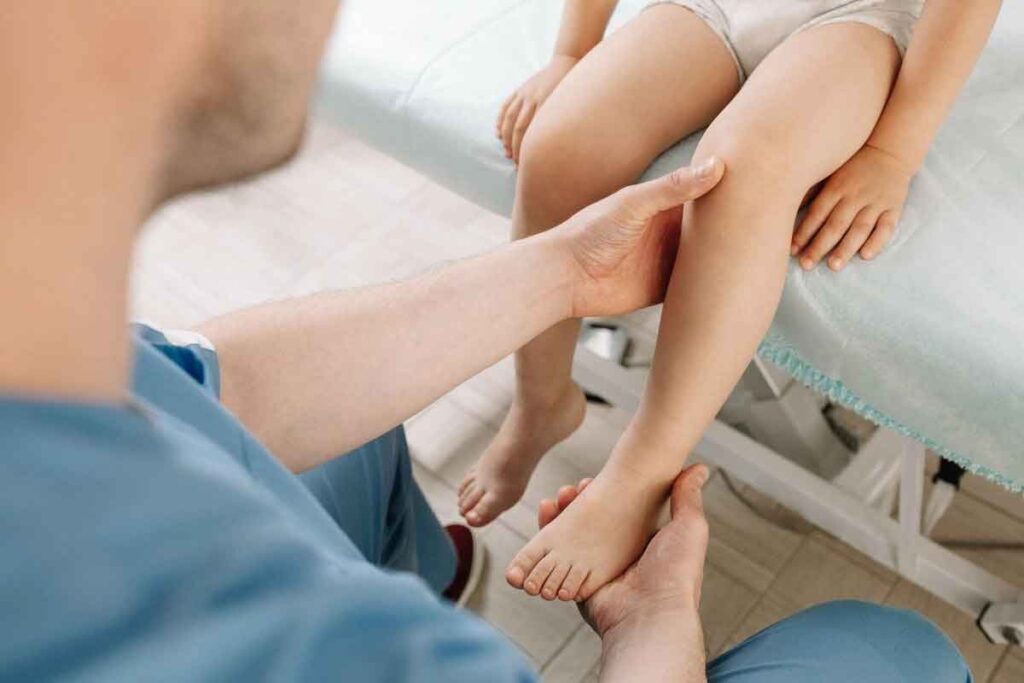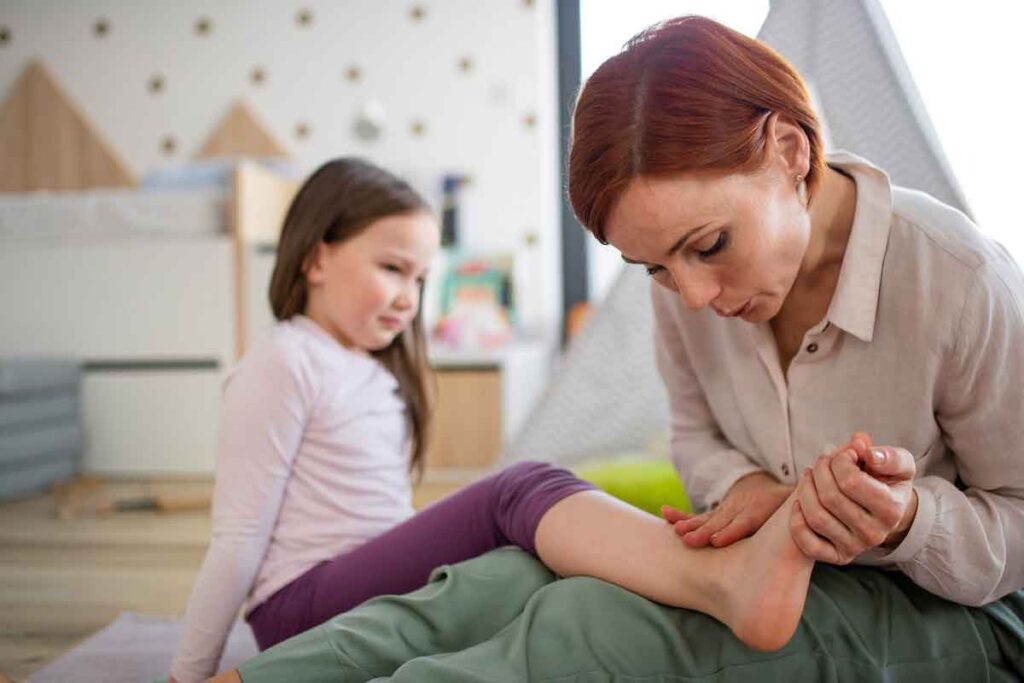
Learn how to identify if your child’s pain is growing pains or leukemia with signs parents must recognize early. When kids say they have leg or arm pain, it worries parents. They wonder if it’s just growing pains or something more serious, like leukemia. At Liv Hospital, our team is here to help you figure it out and know when to see a doctor.
Most of the time, leg or arm pain in kids is not a big deal. But it’s important to tell the difference between normal issues and serious ones. The American Cancer Society says that bone and joint pain can be a sign of leukemia in kids. We’ll look into these differences to help you know when to worry.

Limb pain in kids is common and can have many causes. It’s normal for parents to worry when their child hurts their leg or arm. Knowing what might be causing the pain helps figure out what to do next.
There are many reasons why kids might feel pain in their limbs. Some common ones include:
Sometimes, limb pain can be a sign of something serious, like leukemia. Leukemia can cause bone and joint pain. This might look like growing pains. It’s important to know the possible causes and get medical help if you’re worried.
Finding out what’s causing your child’s pain is key. A doctor will check your child’s medical history and do a physical exam. This helps find the real reason for the pain.
At times, more tests like blood work or imaging might be needed. For example, if leukemia is thought of, a bone marrow biopsy might be done. This test checks for cancer cells.
Important things for diagnosis include:
By knowing what usually causes limb pain in kids and why getting a proper diagnosis is important, parents can help their child get the right care.

It’s important for parents to know about growing pains. They help tell if a child’s pain is normal or something more serious. Growing pains are common in kids’ legs and arms, mainly in those aged 3 to 12.
Growing pains often hit kids in their early years. They usually start between 3 and 12 years old, peaking at 8-10. The pain feels like aching or throbbing, mostly in the legs but sometimes in the arms.
The pain usually happens in both legs or arms. It often strikes in the late afternoon or evening, even waking kids up. It’s key to remember that growing pains aren’t linked to how fast a child grows or specific growth spurts.
Growing pains have unique signs that set them apart from other limb pains. Key traits include:
Even though growing pains can be uncomfortable, they don’t cause lasting harm or affect a child’s health.
While growing pains are more common in legs, they can also happen in arms. Kids might feel arm pain, mainly if they’ve been active. The pain in the arms due to growing pains is similar to leg pain: it’s aching or throbbing, often in both arms, and happens in the late afternoon or evening.
If a child has arm pain at night, look at the bigger picture. Consider other symptoms and the child’s overall health. This helps figure out if it’s growing pains or if they need more check-ups.
Growing pains and leukemia can look similar, but they are not the same. Growing pains are usually harmless, but leukemia can have similar signs. Parents need to know the differences.
The way pain feels and when it happens can tell you a lot. Growing pains usually hurt in the legs, like the calf or thigh, and happen on both sides. They often hurt more at night and can go away in the morning. On the other hand, leukemia pain can last longer and doesn’t always follow a pattern.
Leukemia pain is often worse and comes with other symptoms. The National Cancer Institute says about 23% of kids with acute lymphoblastic leukemia (ALL) have bone pain.
Growing pains don’t usually come with other symptoms, but leukemia does. It affects how the body makes healthy blood cells.
It’s key for parents to know when to seek medical help. If your child has ongoing pain or other concerning signs, see a doctor right away.
Nighttime pain in kids worries parents a lot. It can mess up their sleep. We need to know the difference between normal discomfort and serious pain.
Kids might feel some discomfort at night. This could be from growing pains or small injuries. But must tell the difference between normal discomfort and pain that might mean something serious.
When looking at nighttime pain, think about how bad it is, how long it lasts, and any other symptoms. Really bad pain, lasts a long time, or comes with other signs like fever or swelling, is a big worry.
If a child has arm or leg pain at night, try to comfort them first. Ask them about the pain, like where it is, how bad it is, and what makes it better or worse. Keeping a pain diary can help track patterns and find what might cause it.
If the pain keeps coming back, it’s important to see a doctor. This way, you can find out if there’s something serious going on. Knowing what the pain is and how it affects the child’s sleep and daily life helps parents and doctors figure out what to do next.
Pain in children can show up in different places, like the upper thigh, knee, and arm. Each spot has its own reasons for pain. Knowing where the pain is helps figure out what’s wrong and how to fix it.
Upper thigh pain in kids can come from muscle strain, too much use, or diseases like Legg-Calvé-Perthes disease that affects the hip. Sometimes, the pain might come from the hip or lower back. Parents need to watch their child’s symptoms and get medical help if the pain doesn’t go away or comes with other signs.
If a child has pain in one upper thigh, finding the cause is key. Issues like transient synovitis, which is inflammation of the hip, can cause thigh pain. These are usually not serious but need a doctor’s check to make sure there’s nothing worsee like septic arthritis.
Knee pain is common in kids, often from sports, too much use, or diseases like Osgood-Schlatter disease that cause pain and swelling. But, knee pain can also mean something serious,u s as infection or bone tumor. If a child has knee pain in one leg, it’s important to get a full check-up.
Look out for signs that knee pain might be serious, like swelling, redness, or trouble walking. Sometimes, knee pain can be linked to problems in the hip or other leg parts. This shows why a detailed check is needed.
Arm pain in kids can come from many things, like breaks, overuse, or conditions like nursemaid’s elbow, where the radius bone partially dislocates. Most causes are not serious and get better with rest or simple treatment. Butu, some might mean a bigger problem.
If a child has arm pain, check for any recent injuries. If there’s no clear reason or the pain doesn’t go away, getting medical help is important. This is to make sure there’s nothing serious that needs quick treatment.
Children can feel pain in just one limb for many reasons. It could be from a small injury or a serious problem. Knowing why one limb hurts is key for parents. It helps them know when to worry.
The age of a child can tell us a lot about their pain. For example, a 22-year-old 33-year-old, or a 5-year-old with leg pain might face different issues. This depends on their age and how they’re growing.
Some problems can look like growing pains, making it hard to know what’s wrong. It’s important to tell the difference between normal growing pains and serious issues that need a doctor.
Here are some things that might look like growing pains:
Knowing the details of the pain and other symptoms helps figure out what’s wrong. This way, parents and doctors can give the right treatment.
Bone and joint pain are common in kids. But if these pains last a long time, they might mean something serious like childhood cancer. It’s key to know how these signs can point to a bigger problem.
Leukemia, a blood cancer, can cause bone and joint pain. The American Cancer Society says bone pain is a common sign of leukemia. Cancer cells in the bone marrow can damage bones, leading to severe pain.
The pain from leukemia can spread, affecting arms, legs, and joints. This happens because leukemia cells damage the bone marrow and the bone and joint tissues around it.
Growing pains are common in kids, but some signs need attention. If your child’s pain doesn’t go away with rest or pain meds, see a doctor.
Look out for pain in one spot, swelling, or signs of infection. Also, if your child has fever, fatigue, or weight loss with bone pain, get medical help.
As a parent, it’s hard to know when to worry about your child’s pain. But, if you’re unsure about bone or joint pain, it’s safer to talk to a doctor.
It’s important to know the warning signs of serious illness in kids. As parents, we must watch our children closely, paying special attention to leg or arm pain.
Some pain signs can mean a serious problem. We should worry if the pain doesn’t go away, gets worse, or is very bad. Also, if it wakes your child up at night or comes with other symptoms like fever, losing weight, or feeling very tired, it’s time to see a doctor.
The following table highlights key red flags in pain presentation:
| Red Flag | Description |
| Persistent Pain | Pain that lasts or worsens over time |
| Severe Pain | Pain that significantly impacts daily activities |
| Nighttime Pain | Pain that wakes a child from sleep |
| Associated Symptoms | Fever, weight loss, fatigue, or bruising |
Other symptoms can also point to a serious problem. These include unexplained bruising or bleeding, recurring infections, and significant fatigue. If your child has these symptoms and also has pain in their limbs, it’s very important to get them checked by a doctor.
Some symptoms that suggest a serious illness include:
Knowing these warning signs can help parents get their kids the medical help they need. This could lead to finding serious conditions like leukemia early.
Persistent limb pain in children needs a detailed check to find the cause. As a parent, seeing your child in pain is hard. It’s important to know if it’s just growing pains or something serious like leukemia.
The first step is a detailed medical history and physical check. We’ll ask about the pain’s details and any other symptoms. A physical exam helps spot any signs that might show what’s wrong.
Next, we might suggest blood tests and imaging if needed. Blood tests can spot leukemia by looking at white blood cells. Imaging, like X-rays or MRI scans, shows bone and tissue details, helping find problems.
The table below lists common tests for limb pain in kids:
| Diagnostic Test | Purpose |
| Complete Blood Count (CBC) | To check for signs of infection, inflammation, or leukemia |
| X-ray | To evaluate bone structure and detect fractures or abnormalities |
| Ultrasound | To assess soft tissue and joint inflammation |
| MRI | To provide detailed images of bones, joints, and surrounding tissues |
If cancer seems likely, we might do a bone marrow biopsy. This test checks for cancer cells in bone marrow tissue.
Our detailed process helps find the cause of your child’s pain. We know this is tough for families. We promise to care for and support you every step of the way.
Parents can use many ways to help with growing pains. These pains are common in kids and usually happen in the late afternoon or evening. They can be hard for kids and parents alike.
There are several ways to ease growing pains. Gentle massage and stretching exercises can relax muscles and improve flexibility. A warm bath or a low-setting heating pad can also help relax muscles.
For pain, over-the-counter medicines like acetaminophen or ibuprofen can be used. But it’s important to follow the dosage and talk to a doctor if needed.
Most growing pains can be handled at home. But sometimes, a doctor’s visit is needed. If the pain is very bad, lasts a long time, or comes with fever, swelling, or redness, see a doctor.
If the pain stops the child from doing daily things or sleeping well, a doctor should be seen. This is to check for other health issues that might need treatment.
It’s key for parents to know the difference between normal growing pains and serious issues like leukemia. We’ve looked at what growing pains are and when they might be a sign of something more serious. This includes conditions like childhood bone pain or leg pain that could be linked to cancer.
Knowing the difference helps parents stay alert but also reassure their kids. Spotting signs that need a doctor’s attention, like ongoing or severe leg pain, is important. This way, parents can get their child the right care without causing too much worry.
When it comes to leg or arm pain in kids, parents should be careful but not too worried. Understanding why kids might feel pain in their limbs and when to see a doctor is important. If you’re worried about your child’s leg pain or think it might be leukemia, talking to a doctor is the best step.
Growing pains usually happen in kids between 3 and 12 years old.
Growing pains can happen in both legs and arms. They feel like aching discomfort without any redness or swelling.
If your child’s pain doesn’t go away or is very bad, it might be something serious like leukemia. Look out for signs like bruising, extreme tiredness, or limping.
Kids can get limb pain from growing pains, injuries, or infections.
Nighttime pain is a worry, especially if it keeps your child awake. If the pain is ongoing or really bad, you should get medical help.
Upper thigh pain in kids can come from injuries, infections, or even serious issues like leukemia.
Yes, knee pain in kids might mean a serious problem, like leukemia or other cancers.
Unilateral pain can stem from injuries, infections, or serious issues like leukemia. Getting a clear diagnosis needs a detailed medical check-up.
Look out for red flags like pain that doesn’t stop, is very bad, has bruises, is extremely tired, or makes them limp. These signs need immediate doctor’s attention.
Doctors will do a physical check, blood tests, imaging, and special tests if they think it might be cancer.
You can try comfort measures like massage, stretching, and over-the-counter pain relievers to help with growing pains at home.
If home remedies don’t work, or if you see any red flags in pain signs, it’s time to see a doctor.
Yes, leukemia can lead to bone and joint pain in kids. If your child has persistent or severe pain, they need to see a doctor.
Symptoms like extreme tiredness, bruises, or limping, along with limb pain, might point to a serious illness like leukemia.
Subscribe to our e-newsletter to stay informed about the latest innovations in the world of health and exclusive offers!
WhatsApp us